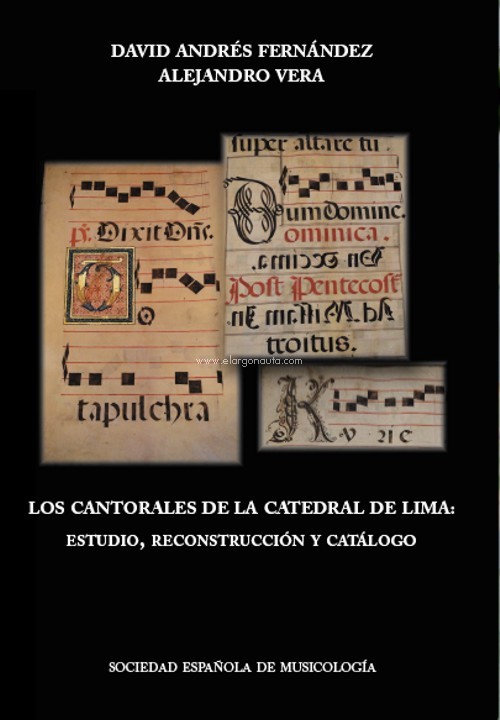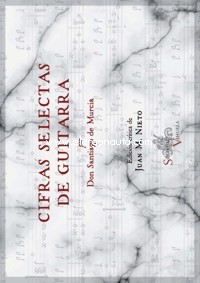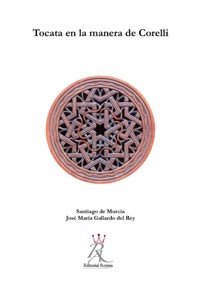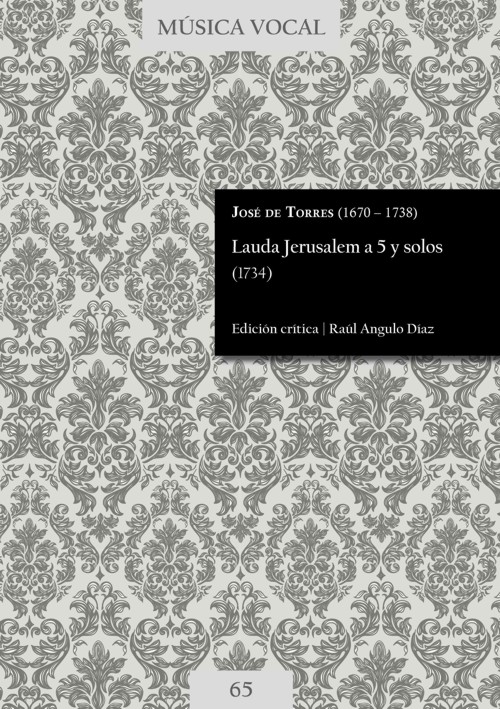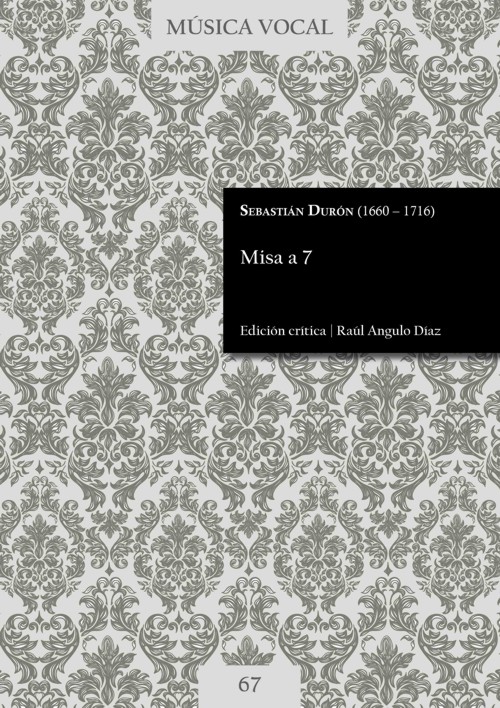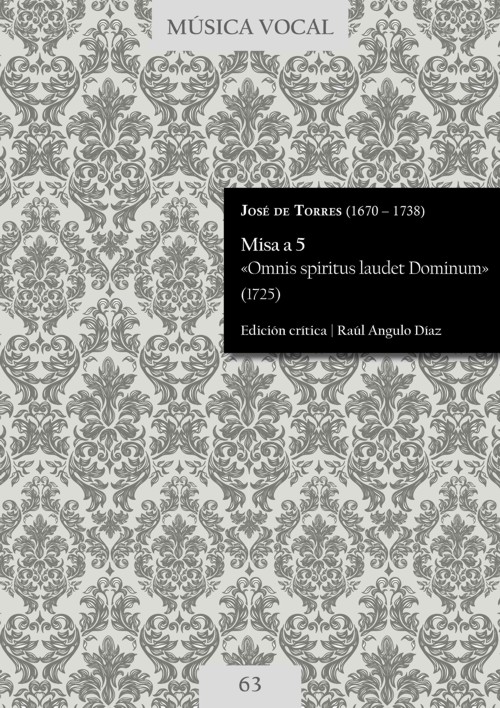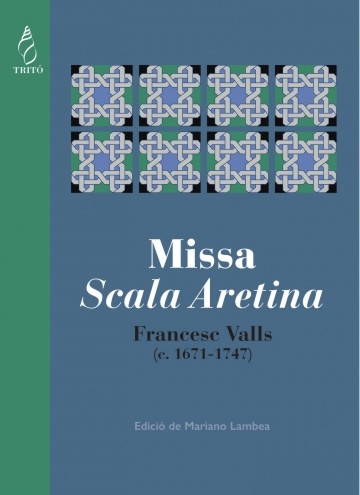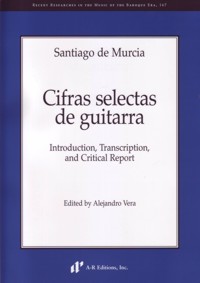
Cifras selectas de guitarra: Introduction, Transcription, and Critical Report
Murcia, Santiago de
;Vera Aguilera, Alejandro
A-R Editions, Inc.. 2010Instrumento:
Ficha técnica
- EAN: 9780895796783
- ISBN: 978-0-89579-678-3
- Código del editor: B 167
- Editorial: A-R Editions, Inc.
- Fecha de edición: 2010
- Encuadernación: Rústica
- Dimensiones: 23x31,5
- Idioma: Inglés
- Nº páginas: XLVI+106
Agotado
Agotado en la editorialPVP. 18,40€
Añadir a la Lista de deseos
Santiago de Murcia (1673-1739): Cifras selectas de guitarra
Edición de Alejandro Vera.
This edition presents a detailed study and transcription of the manuscript ?Cifras selectas de guitarra? (1722) of Santiago de Murcia (1673?1739), as well as a complete facsimile provided separately. While the study contributes new information about Murcia and fresh perspectives on the circulation of baroque guitar music, particularly between Spain and the New World, the facsimile and transcription are intended to allow performance of the works in the collection by both baroque and modern guitarists. This source, found by the editor in Santiago, Chile, during research undertaken between September 2003 and August 2004, supplies a good number of new pieces, as well as alternative versions of others included in Murcia?s previously discovered sources?namely, the manuscripts ?Passacalles y obras de guitarra? (1732) and ?Códice Saldívar no. 4,? and the print Resumen de acompañar la parte con la guitarra (1714).
CONTENIDO:
1. Jácaras por la E
2. Marionas por la B
3. Difrencias de gallardas por la E
4. Pavanas por la E
5. Españoletas por la E
6. Folías españolas por la E
7. Jácaras francesas por la D
8. El Amor por la E
9. Tarantelas por la E
10. Las vacas por la E
11. Folías despacio al estilo de Italia
12. Pasacalles de compasillo por la E
13. A proporción por este tono
14. Villanos por la C
15. Caballero por la C
16. Paradetas por la C
17. Canarios por la C
18. Menuet fácil
19. Menuet
20. Otro [Menuet]
21. Otro [Menuet]
22. Otro [Menuet]
23. Otro [Menuet]
24. Otro [Menuet]
25. Otro [Menuet]
26. El menuet inglés
27. Menuet
28. Otro [Menuet]
29. Otro [Menuet]
30. Otro [Menuet]
31. Otro [Menuet] difícil
32. Otro [Menuet]
33. Otro [Menuet]
34. Otro [Menuet]
35. Jácaras de la costa
36. El torneo por la C
37. La Azucena por la E
38. Los imposibles por la D
39. Cumbé por la A
40. Zarambeques por la C
41. Obra por la C
42. Bailad caracoles por la C
43. Marsellas por la B
44. Canción
45. Marcha de los oboes
46. Marcha valona
47. Marcha de los carabineros
48. Marcha de las guardias de la Reina Ana
49. Paspied nuevo
50. Burée por la D
51. Gavota
52. Gavota
53. Idea nueva, y obra especial de clarines
54. Obra por la K3
55. Burée
56. Pasacalles de compasillo por la O
57. A proporción
58. Pasacalles de compasillo por el +
59. A proporción
60. Pasacalles de compasillo por la B
61. A proporción
62. Pasacalles de compasillo por la G
63. A proporción
64. Pasacalles de compasillo por la D
65. A proporción
66. Pasacalles aclarinados por la C a compasillo
67. Pasacalles a compasillo por la H
68. A proporción
69. Pasacalles de compasillo por la A
70. A proporción
RESEÑA
The discovery of a substantial and unknown source of music is today something rare, an event which may happen only once in the career of a musicologist. When such a source includes music by a well-known composer, it is even stranger. That was exactly what happened at the end of 2003, when I found a manuscript entitled "Cifras selectas de guitarra," attributed to Santiago de Murcia and dated 1722, in a second-hand bookstore at Santiago, Chile.
At that time, only three sources by Murcia were known: the print "Resumen de acompañar la parte con la guitarra" (1714), an important treatise about accompaniment with the guitar that contains a compilation of pieces in guitar tablature; the manuscript "Passacalles y obras de guitarra" (1732), containing suites in both the French and Italian styles along with Spanish "pasacalles"; and the so-called "Códice Saldivar no. 4," an untitled and undated manuscript with Spanish dances, several French dances and a sonata in three movements. Since all three were available I 11 facsimile and modern editions, I was able to make a preliminary comparison, reaching the conclusion that "Cifras selectas" included both known and new pieces, which undoubtedly increased its value. This led me to ask my university to purchase the manuscript, which occurred on 8 March 2005 after extended negotiations with the bookseller. Thus, "Cifras selectas de guitarra" is currently available to scholars and performers in the Biblioteca Campus Oriente of the Pontificia Universidad Católica de Chile.
The purchase of the manuscript gave me the chance to prepare the concordances and to make a complete transcription of the music in modern notation. Additionally, I inquired further about Murcia's life through research in Madrid archives in order to expand the scant information available concerning Murcia's position as guitar master of Queen Marie Louise of Savoy. I was particularly interested in the hypothesis owed to other scholars that Murcia had traveled to the New World late in his career, an idea that had always seemed doubtful to me. I believed that Murcia had remained in Madrid and that the lack of information on him was due to the limited documentary research that had been done so far. Perhaps I was somewhat obsessed about this, but obsession is, after all, part of research. Several parish records preserved in Madrid confirmed that our guitarist lived in the capital of Spain from his birth in 1673 until his dead in 1739. Hence "Cifras selectas" and his two other manuscripts (both of them corning from Mexico) did not relate to the travels of the composer but the circulation of his work. The historical information was complemented by two of the pieces of the manuscript, suggesting that Murcia belonged to the faction opposed to Philip V and the Bourbon dynasty during the War of Spanish Succession, a stance that possibly caused his separation from the court in 1706, as explained in the introduction to this edition.
All of this, the transcription to modern guitar and an extended introduction related to the source and Murcia himself, is included in this edition, that, however, might have been considered unfinished without the complete facsimile included as a supplement, since modern guitarists certainly prefer and are able to perform directly from tablature. For this reason, Neil D. Pennington's goal of making a transcription that allows for performances on both baroque and modern guitars, perhaps legitimate when he wrote his dissertation on Murcia, seems unnecessary today. Since the original tablature was intended for an instrument with a lower and an upper string in some courses and thus cannot be played directly by a modern guitar, a transcription should be assist a modern guitar player unacquainted with such tablature. With this in mind, and partly following Frank Koonce's example, I have tried to make a transcription appropriate for the modern guitar that preserves Some of the character and idiomatic devices of the Baroque one, specifically the register (my transcriptions do not include any sound below the note A) and campanelas (scales performed in alternating courses, giving rise to harp-like effects).
Murcia's prologue is of special interest concerning perfarmance issues with regard to both technical and stylistic matters. For instance, Murcia indicates that placement of the little finger of the right hand "near the bridge of the guitar" is typical of beginners, but a skillful guitarist must play with this hand in the air, "especially when the pieces are delicate and include strummed strokes, as in these cases the instrument must be played in the middle" (i.e., in a position close to the junction between the neck and body of the instrument). The only exception is when accompanying another instrument, in order to obtain a greater sonority. He also states that the strings must be plucked only with the thumb, index, and middle fingers, which explains why the four- and five-part chords are virtually always strummed. Additionally, his prologue casts light on the sometimes controversial issue that the lipper-note trill was the most suitable for Murcia's music, either in Spanish or foreign style, and thus confirms Robert Strizich's intuition.
As to the contents of the edition it is worth noting that apart from the previously unknown pieces, some of the concordant pieces (i.e., those already found in "Passacalles y obras" and "Códice Saldivar no. 4") can also be considered as new because of the many variants they contain. This is to be explained by the flexible structure of Spanish dances and pasacalles, consisting of a series of variations or diferencias. Two examples can be found in "Jácaras por la E" and "Marionas por la B," where only four and five variations, respectively, are coincident with the known versions in "Códice Saldivar." Aside from the perceived degree of novelty, it can be of interest for both scholars and performers to compare the different versions in Murcia's sources. If the diferencias can be interpreted as a kind of improvisation, then these versions of a given dance can be combined by the guitarist into a personal but historically-grounded performance. On the other hand, the seventy pieces in the manuscript in its current state (the last fifteen folios are lost) combine the genres included in "Códice Saldivar" and "Passacalles y obras," that is, Spanish dances, suites, pasacalles in different meters and modes, French dances (mainly minuets) and some marches. In this sense, "Cifras selectas de guitarra" represents a synthesis not only of Murcia's music as a whole, but of the genres cultivated by the guitarists of his time.
(Alejandro Vera, en "Embellishments: A Newsletter about Recent Researches", nº 43, Spring 2011)


